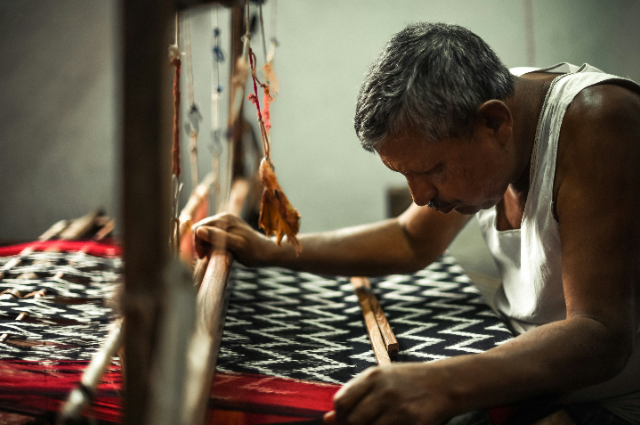
Photo by Akhil Pawar on Unsplash
Introduction:
Weaving Through Time
India's handloom industry embodies centuries of craftsmanship, blending artistry and culture into its very fabric. Supporting millions of rural artisans, it is a symbol of sustainability and tradition. Despite its historical importance, the industry faces mounting challenges today, from competition with power looms to resource scarcity.
This article delves into the historical, cultural, and socio-economic significance of handlooms, examines current challenges and government initiatives, and offers solutions for sustaining this iconic sector.
Historical and Cultural Significance
The handloom industry dates back to the Indus Valley Civilization, evolving into an integral part of India's cultural heritage. Renowned textiles such as Banarasi silk, Chanderi sarees, and the Assamese gamosa reflect the regional pride woven into these products. Over time, handlooms have been celebrated in ancient texts and Mughal courts and have thrived as cultural mainstays.
During the Swadeshi movement, handlooms became a rallying symbol against colonial exploitation. Gandhi’s promotion of khadi emphasized self-reliance, a value resonating even in contemporary times.
GI Tagging:
Geographical Indication (GI) tags for products like the Assamese gamosa and Kanjeevaram sarees safeguard authenticity, enhance global recognition, and deter imitation.
Socio-Economic Importance
Handlooms sustain over 3.5 million households, with women making up 70% of the workforce. They symbolize eco-friendly practices, using minimal resources while preserving traditional craftsmanship. More than just an economic activity, handlooms represent a vibrant cultural legacy, passed down through generations.
In rural economies, handlooms provide employment while preserving intangible heritage. The intricate designs of Madhubani textiles and the vibrant aesthetics of Gujarat's Bandhani showcase the skill and innovation that define this industry.
Current Government Interventions
Efforts to support the handloom sector include financial aid, marketing initiatives, and technological advancements. Notable schemes include:
1. Financial Assistance
The Weaver MUDRA Scheme and subsidies under the National Handloom Development Program enable artisans to access capital and improve production.
2. Technological Integration
Digital platforms like “India Handmade” empower weavers to sell directly to consumers.
3. Global Branding
Initiatives such as “Vocal for Local” and GI-tag-based promotions highlight the luxury appeal of handlooms to international buyers.
These measures show progress but require better implementation to address systemic challenges.
Looming Challenges
The handloom industry faces various challenges:
1. Competition from Power Looms
With over 60% market dominance, power looms offer cheaper alternatives, sidelining handlooms' unique appeal.
2. Raw Material Price Volatility
Rising costs of cotton and silk strain artisans, who often resort to lower-quality materials.
3. Skill Erosion
Migration of younger generations to cities threatens the transmission of traditional weaving skills.
4. Marketing Barriers
Limited branding and lack of consumer awareness about GI-tagged products weaken demand in domestic markets.
5. Economic Instability
Seasonal sales cycles and crises like the COVID-19 pandemic leave many weavers vulnerable.
Sustainability and Ethical Fashion: Opportunities
The global demand for sustainable and ethically sourced goods is a boon for handlooms.
1. Expanding GI Tags
More products can be protected and promoted through GI tagging, increasing global market appeal.
2. Designer Collaborations
Partnerships with contemporary designers have revitalized traditional crafts and made them relevant for modern consumers.
3. Social Media Outreach
Digital storytelling about the artisans and their heritage fosters emotional connections with buyers.
Case Studies: Revival and Growth
1. Banarasi Silk
Efforts to promote Banarasi silk through GI tags and international expos have revitalized its market.
2. Assamese Gamosa
The GI tag has positioned the gamosa as a national emblem, spurring both cultural pride and demand.
3. Pochampally Ikat
E-commerce partnerships have expanded the market for Pochampally ikat, improving artisans’ livelihoods.
Policy Recommendations
For sustainable growth:
1. Focus on Economic Deprivation
Shift affirmative action from caste-based to income-based benefits, ensuring equitable access to resources.
2. Skill Development and Education
Vocational programs that merge traditional techniques with modern marketing skills can rejuvenate interest among younger generations.
3. Streamlined Supply Chains
Improved access to affordable, high-quality raw materials will increase artisans’ profitability.
4. Consumer Awareness Campaigns
Educating consumers on the ecological and cultural importance of handlooms can drive demand.
Conclusion:
Preserving the Legacy
The handloom industry embodies the spirit of India, uniting tradition with innovation. With targeted efforts, it can continue to thrive, creating sustainable livelihoods while preserving cultural heritage. As consumers and policymakers, it is our responsibility to ensure this legacy remains unbroken.
